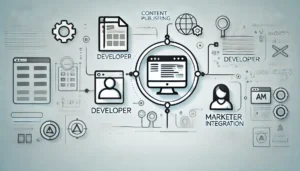Everybody has them: slow-pay and no-pay clients. If you’ve been at it long enough, eventually you end up with brilliant projects, coupled with unpaid invoices. Worse still, sometimes the sites you build are live and operational while you’re still waiting and hoping to be paid. You may even be fending off the collection efforts of freelance or other agency contributors who helped you build the site, unable to pay them until you’re paid by the client.
Stop Problems before They Start
The first step in keeping clients from becoming pro bono without your permission is to use a service agreement that protects your interests, and then stick to it through the whole project. For your service agreement, be sure that you, your lawyer, or whoever is writing it includes the following terms to protect you:
- Upfront Installment:
At the beginning of the project, always request a payment up front. Whether that’s 25% of the total project estimate, 50% of the total, or another number is up to you. But unless it’s a client you’ve known for years or have worked with before, commencing work without some money in hand will have you behind the cash flow curve from the very start. You may never catch up. An initial payment also ensures that the project is a priority for the client. If they’ve invested directly in it, they’re more likely to give you the input and feedback you need to make it work to have the project built and delivered.
After that initial installment before you start work, build in progress payments. Make each deliverable trigger a payment that’s large enough to cover you through to the next due date. Once you’ve made the delivery, wait for the progress payment before doing more work on the project. This will have two necessary effects. First, if the client has questions about what you’ve done to that point, or thinks it’s unsatisfactory, you’ll find out before doing anything more. Second, it will keep you from extending credit to the client beyond a certain point.
The silent client is a common enough creature. Feedback may be great for a few weeks or so, but as the project enters month two or three, choices are still required, client-dependent content is lacking, and the project stalls. This can keep you from reaching the next progress payment and perhaps even from delivering the project at the end. Put a provision in your agreement that says failure to respond to repeated requests for content and approvals will result in an invoice at a stated hourly rate for work done up to that point.
Your standard client agreement probably already addresses what intellectual property belongs to the client and what’s simply under license at the conclusion of the project. If not, put it in there. Many agreements are without a provision stating that all copyright in the code, text, layout, design features, and other aspects created by your firm remain yours exclusively, with no license to the client to use them until you’re paid in full. Such a provision can give you a mighty tool against deadbeats. In the US, you can give a Digital Millennium Copyright Act (DMCA) notice to a deadbeat client’s ISP, which the ISP should honor by taking the site down. If they’ve yet to pay the contract price, they are infringing the creator’s rights by copying and displaying your work. Of course, the DMCA is inapplicable to the EU or Australia, but other copyright protections exist in those regions that can help provide some leverage for payment.
Hosting the site during development and until all payments are made is another way of remaining in control of the delivery and payment process. If the client is physically unable to launch the site or take it to a competitor to finished it when you insist on payment, it’s more difficult for them to avoid paying what they owe.
Particularly in countries where each side pays its own legal costs regardless of who wins, it’s important to state in your contract that the deadbeat client is responsible for any legal expenses and costs required to collect on their debt to you. Also consider a stipulation that invoiced amounts, if unpaid in a certain time period, begin to accrue interest. These two points can help your invoices rise to the top of the pile if a client finds themselves in the unfortunate position of having to decide which debts to pay and which ones to let sit a while longer.
If You’re in a Hole, Stop Digging
“I know we need to pay your last invoice, but our accounting department has it now, and we really need to finish the site for it to go live.” If this sounds familiar, join the club. A slow-paying client will often report there’s internal progress towards payment, and a compelling story of why they’re totally up the creek if the site is unfinished by the end of the week. Beware. What this client is really requesting is that you extend more credit in spite of a bad payment history. They’re asking that you continue to meet and even prioritize your obligations to them, while they fail to meet their payment obligations to you.
If you’re in a hole, stop digging. To speed up the process, offer to pick up the payment in person if their office is near yours, or let them know they can pay you by credit card. You can still appear helpful and show concern for the client’s plight without turning their issue into your cash flow problem. Once you receive a date from the client by which you’ll have payment in hand, you can agree to clear your calendar to work on their project for the next few days upon receipt of payment.
It’s Not You, It’s Me
It can be tough to be tough with your clients. Most client relationships are collaborations that begin with lots of enthusiasm and trust. If you’re concerned that your new client will look askance at an agreement that mentions attorney’s fees, collection costs, ownership of all IP until fully paid, and other terms to safeguard your rights, tell them, “It’s not you, it’s me.” Explain that you’ve been burned before, and though you know that they will not be a problem client, your business partners (or spouse, or lawyer, or the voices in your head) insist that you use a contract that reflects those hard lessons learned. If the client complains or pushes back, ask yourself why it should be a big problem for them to agree to these terms.
These protective terms of the contract will only matter if the client fails to uphold their end of the bargain. As long as they’re planning to pay you as agreed, the protections, rights, and payment parts of the deal will never be an issue. If some of the protections you’re after are starting to look like deal breakers, it may be time to reconsider whether you want to do a job that leaves you high and dry. Business people often feel like they can’t afford to walk away from a potential client, but be careful. These same people don’t work for free, either.
Chris Gatewood is a lawyer based in Virginia with the firm of Hirschler Fleischer P.C. Chris works on intellectual property and business matters for software companies, web developers, and other clients. His commentary here provides general information on legal topics of interest to the web development and design community, but it is not legal advice.



































































































